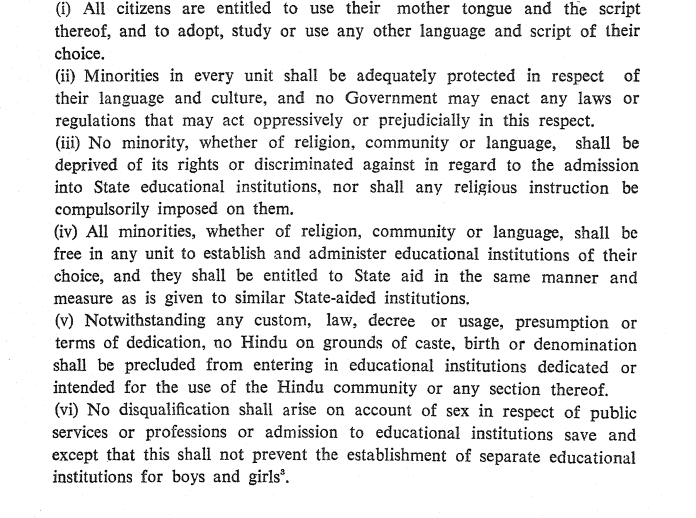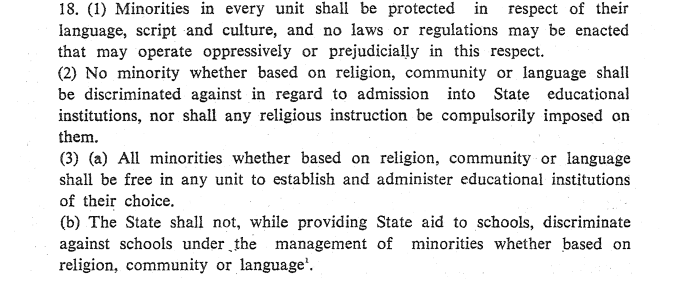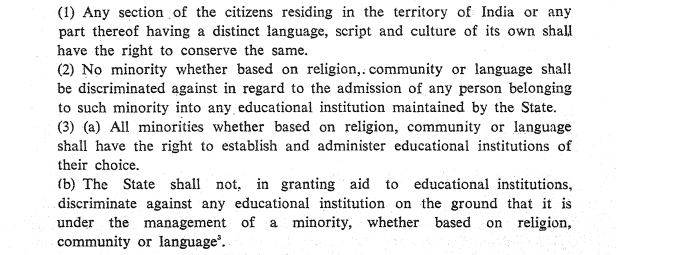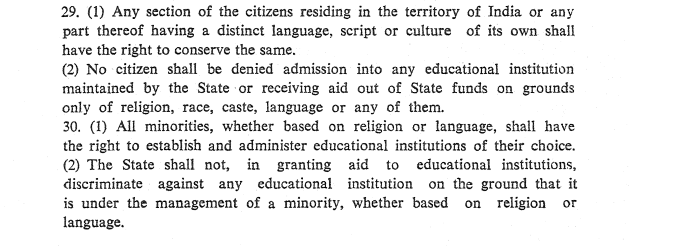This post will be part of a 2-post series where I aim to prove that the makers of our Constitution very much intended to provide Educational Rights to all communities, INCLUDING THOSE WITHIN THE HINDU RELIGION.
The deduction of that intention will be made in the 2nd post of this series. However, in order to get there, it is important to understand the textual transformation of the minority cultural and educational rights in our Constitution during its making.
Draft under Sub-Committee of Fundamental Rights
The first draft of the cultural and educational rights of minorities was prepared by a team consisting of K M Munshi, K T Shah and Harnam Singh. The draft prepared by them was placed in front of the Sub-Committee of Fundamental Rights on the 27th of March 1947.
The Sub-Committee felt that this particular area was better placed under the supervision of the Minorities Sub-Committee and transferred the drafting to this group. On the 19th of April 1947, the Minorities Sub-Committee came up with the first official draft which looked as below

Clause 18 in the interim report
The Minorities Sub-Committee deliberated further on the above 6 points, and came up with a refined version which came to be included as Clause 18 in the Draft Constitution. In this Clause 18, sub-clauses (i), (v) and (vi) from the first draft were dropped and sub-clauses (ii), (iii) and (iv) remained, with some modifications. Clause 18 looked as below

It is to be noted that even in the above draft version, clauses 1 and 2 still retained the term minorities.
Article 23 in the Draft Constitution
Further deliberations on the above draft took place on the 1st and 3rd of November 1947 and a refined version of the Article 23 came to be prepared. This looked as below

The key difference noticeable in the above draft is that under clause 1, the word ‘minority’ had been replaced by ‘any section of the citizens’ and some other changes to the wording had been performed.
Articles 29 & 30 of the Indian Constitution
On the 7th and 8th of December 1948, Draft Article 23 came up for discussion in the Constituent Assembly. 2 key changes took place
- sub-clause (2) was re-written. The new sub-clause read
- “No citizen shall be denied admission into any educational institution maintained by the State or receiving aid out of State funds on grounds only of religion, race, caste, language or any of them“
- The word “community” was dropped from sub-clause 3(a)
- Sub-clause 3 (a and b) were moved out as a new Draft Article 23-A
With the above 2 (main) amendments included, Draft Articles 23 and 23-A were approved and included in the Constitution, and finally became Articles 29 and 30.
The Articles now looked as below

The amendments moved to modify what became 29(2) and 30(1) give some very important clues on the real intentions of the makers of the Constitution. Hence it will be covered in detail in the next post.
(This article first appeared at https://securecoreblog.wordpress.com/2017/08/26/evolution-of-minority-cultural-educational-rights/ and is being reproduced by the author)


[…] our State and institutions during the initial post-independence years under Jawaharlal Nehru, and successive interpretations of the Constitution’s articles 26-30 have bestowed certain rights on ‘minorities’ […]